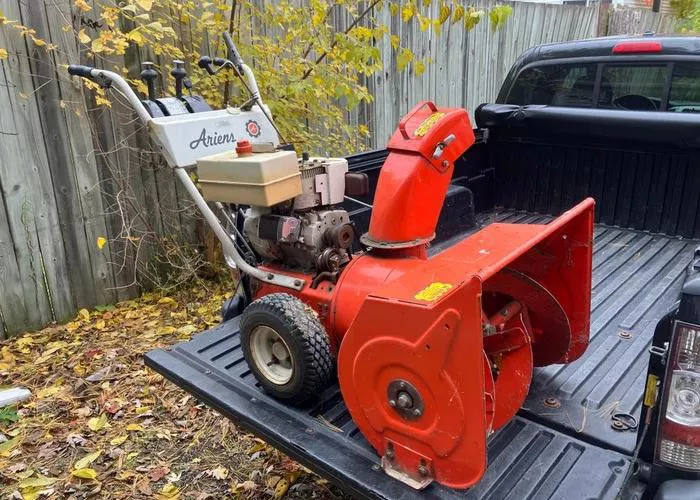A snow blower is a valuable tool for clearing snow from driveways, sidewalks, and large outdoor spaces, particularly in regions that experience heavy snowfall. However, while snow blowers offer convenience and efficiency, they also come with several drawbacks that potential users should consider before making a purchase. From environmental concerns to maintenance issues, here are six key disadvantages of using a snow blower.
1. High Initial Cost and Maintenance Expenses
One of the primary disadvantages of a snow blower is its high upfront cost. A quality snow blower can range from a few hundred to several thousand dollars, depending on the type, size, and power capacity. Gas-powered snow blowers, in particular, tend to be more expensive than electric models but offer superior performance in heavy snow conditions.
In addition to the initial purchase price, snow blowers require regular maintenance to remain in optimal working condition. This includes:
- Engine oil changes
- Spark plug replacements
- Fuel system maintenance (for gas-powered models)
- Blade sharpening or replacement
- Belt inspections and replacements
- Clearing clogged snow and ice buildup
These maintenance tasks not only add to the overall cost but also require time and effort from the user, making snow blowers a relatively high-maintenance tool.
2. Environmental Impact
Gas-powered snow blowers contribute to air pollution by emitting carbon monoxide (CO), nitrogen oxides (NOx), and volatile organic compounds (VOCs). These emissions contribute to greenhouse gas buildup and negatively affect air quality, particularly in urban and suburban areas where multiple snow blowers may be operating simultaneously.
Moreover, fuel spills and improper disposal of used motor oil can lead to soil and water contamination, further impacting the environment. While electric snow blowers offer a cleaner alternative, they still rely on electricity, which may be generated from fossil fuels, indirectly contributing to pollution.
3. Noise Pollution
Snow blowers, especially gas-powered models, can be extremely loud during operation. Noise levels can reach up to 100 decibels (dB), which is comparable to the noise produced by a chainsaw or a motorcycle. Prolonged exposure to such high noise levels can cause hearing damage over time.
For residential areas, the loud operation of snow blowers can also be a nuisance to neighbors, particularly in the early morning or late evening hours when snow removal is often necessary. Some local regulations even impose restrictions on the use of noisy outdoor equipment, which may limit the convenience of using a snow blower.
4. Limited Maneuverability and Weight
Snow blowers, especially two-stage and three-stage models, are heavy and bulky, making them difficult to maneuver, particularly in tight spaces or on uneven terrain. The weight of a snow blower can range from 50 to over 300 pounds, depending on the model and features.
This bulkiness can be particularly challenging for elderly users or individuals with limited physical strength. While some models come with self-propulsion systems to ease movement, handling a snow blower still requires a certain level of physical effort and endurance, particularly when clearing large areas or dealing with deep snow accumulations.
5. Dependence on Weather Conditions
While snow blowers are designed to handle snowy conditions, they have limitations when dealing with certain types of snow and weather conditions. For example:
Wet and heavy snow: Some snow blowers, particularly single-stage models, struggle to clear wet, compacted snow effectively. The snow may clog the chute, reducing efficiency and requiring frequent stops to unclog the machine.
Extreme cold: Extremely low temperatures can make starting a gas-powered snow blower difficult, especially if the engine oil thickens or the fuel system becomes clogged.
Ice and slush: Snow blowers are not designed to handle solid ice or heavy slush, which may require additional tools such as an ice chopper or shovel for effective removal.
These limitations mean that users may still need to perform manual snow removal in some cases, reducing the overall convenience of owning a snow blower.
6. Safety Risks and Potential Hazards
Snow blowers, like any mechanical equipment, pose certain safety risks. Some of the most common hazards associated with their use include:
Injury from rotating blades: The auger and impeller in a snow blower are powerful enough to cause severe injuries. Users must exercise caution when clearing jams and always turn off the machine before performing any maintenance.
Slips and falls: Operating a snow blower on icy or uneven surfaces increases the risk of slipping and falling, especially when handling heavier models.
Carbon monoxide poisoning: Gas-powered snow blowers should never be used in enclosed spaces, as they produce carbon monoxide, an odorless and deadly gas.
Debris ejection: Snow blowers can pick up and throw small rocks, ice chunks, and other debris at high speeds, posing a risk to nearby people, pets, and property.
To minimize these risks, users should follow safety guidelines, wear appropriate protective gear, and use their snow blower responsibly.
Conclusion
While snow blowers offer an effective solution for clearing snow quickly and efficiently, they are not without drawbacks. High initial costs, ongoing maintenance, environmental concerns, noise pollution, maneuverability challenges, weather limitations, and safety risks are all factors to consider before investing in a snow blower. Understanding these disadvantages allows users to make an informed decision and explore alternative snow removal methods if necessary. For those who prioritize convenience and efficiency, choosing the right type of snow blower and following proper maintenance and safety practices can help maximize the benefits while minimizing the drawbacks.


